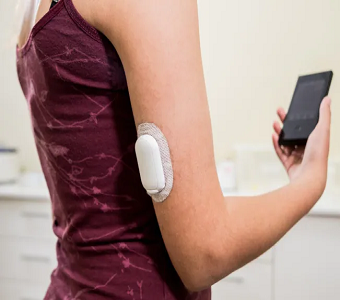GBT announced their highly anticipated Phase 3 Part A data this morning and a lot was left to be desired. The data that was presented was good, but the company was vague with secondary endpoints and declined to provide much information.
Today’s news shifts GBT’s pivotal catalyst to a future conference where full data will be presented (likely ASH in December 2018). Here is what was announced:
Primary endpoint was met & higher 1500mg dose looks promising
58% of patients on the 1500 mg dose (p<0.0001) and 38% of patients on the 900 mg dose (p=0.0021) achieved a greater than 1 g/dL increase in hemoglobin at 12 weeks versus 9% on placebo. Put into perspective, Phase 1/2 data showed 46% of patients achieved the same endpoint vs 0% placebo (p =0.006). The company mentioned that it will likely proceed with the 1500mg dose.
The likely 1500mg dose that will be selected moving forward has shown a higher response (58%) than past data (a clear positive).
Vague Details on Additional Data Points
GBT reported that there were statistically significant and dose-dependent improvements in reticulocytes and bilirubin with both voxelotor doses. An improvement in these was expected as it is what the company has presented in the past, but specific details on the data were not given. Presumably, this will be announced at ASH.
PRO Secondary Was Abandoned
The patient reported outcomes (PRO) were one of the big risks going into Phase 3 as they were a new measurement that GBT was trying to get adopted as a secondary endpoint. The PRO endpoint was also quite subjective since it measured how patient symptoms changed (pain & fatigue).
The company decided to abandon this secondary endpoint, claiming it was difficult to interpret data due to low baseline symptom scores and high variability. This was a surprise since GBT had dedicated a lot of time/effort to getting this endpoint adopted, with the support of the FDA. Scrapping it outright indicates PRO data was weak.
In hindsight, PRO was an ambitious endpoint that was not only difficult to measure, but also not very telling of voxelotor’s effect on quality of life. 64% of patients enrolled in GBT’s Phase 3 Part A were also taking hydroxyurea, so PRO was not indicative of solely voxelotor’s effect, due to the combo use with hydroxyurea.
VOC Selected as Secondary Endpoint, but Specific Details Were Vague
GBT’s release showed that there were numerically fewer VOC events in both voxelotor doses than in the placebo group. However, no additional data was given so this statement alone is difficult to analyze. Also, due to limited patient follow-up (12 weeks), VOC did not reach statistical significance (this was expected).
Remember, in order to qualify for GBT’s Phase 3 study, patients will have to have had at least one VOC within the past year and no more than 10. At ASH 2017, GBT announced that annualized VOC events of patients enrolled was a mean of 2.7 events/year. The company declined to update this mean figure in today’s release.
In the compassionate use study (n=7), VOC events cumulatively dropped from 28 to 9 (67% decrease). In a survey of experts (read here), 45% would view a reduction in annualized VOC events by 1 or more as a clear signal of efficacy (equates to 37% decrease). With additional follow up time, more data should be expected at ASH. We think this is a big number to look for moving forward.
Drug Showed Good Safety
An Independent Data and Safety Monitoring Board (DSMB) did not identify safety concerns with voxelotor at either the 900/1500mg doses. With both doses showing similar safety, and the higher 1500mg showing much higher efficacy, GBT will likely move forward with the higher dose. The DSMB also supported initiation of dosing in children with SCD young as age 4, which is a good sign for a broad label, assuming FDA approval.
Management: We Believe it Meets Standard for Accelerated Approval
During the morning conference call, CEO TED Love sounded confident that the FDA will listen to a potential accelerated approval based on the company’s strong primary endpoint. If granted, voxelotor will be in market by 2019, rather than the initially assumed 2020. This was the first time GBT has mentioned accelerated approval with confidence, which is definitely a bullish sign given the company has been rather conservative in the past.
Bottom Line
With today’s data, we think GBT should be trading in the $45/share range. Primary endpoint looks strong, but secondary VOC endpoint is still ambiguous. The next catalyst will be full data (presumably ASH 2018 in December), or if they are granted accelerated approval before then. We will wait until markets settle on GBT, before making a decision. Here is our thinking:
- If you are willing to wait 6 months (Dec 2018), we think GBT could warrant upside to $70/share with more data.
- If not willing to wait, we think the market will settle and GBT will trade in the mid-$40 range. Sell at this range and jump back in to play full data at ASH.
Although today’s data was positive, declining to offer additional details really hampers upside. As it stands, voxelotor has a good chance to get approval. Maybe even accelerated approval. However, without detailed data on VOC events and color on reticulocytes and bilirubin, it is difficult to justify a significantly higher price.
PropThink contributors are LONG GBT and have no plans to sell position within next 48 hours.
Access This Content Now
Sign Up Now!




